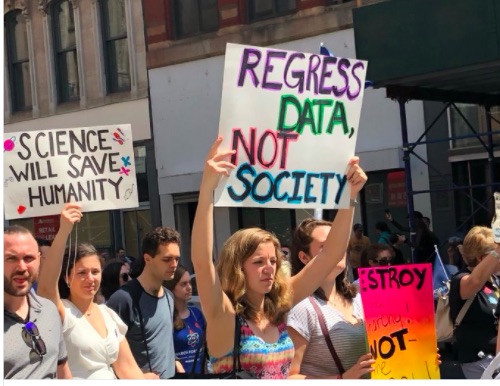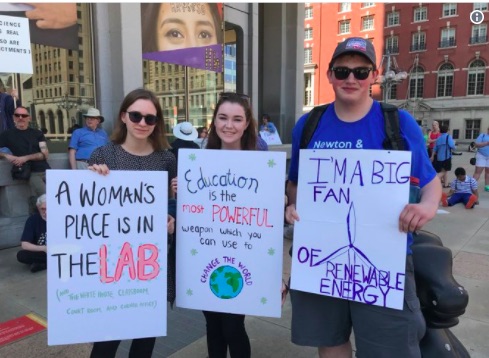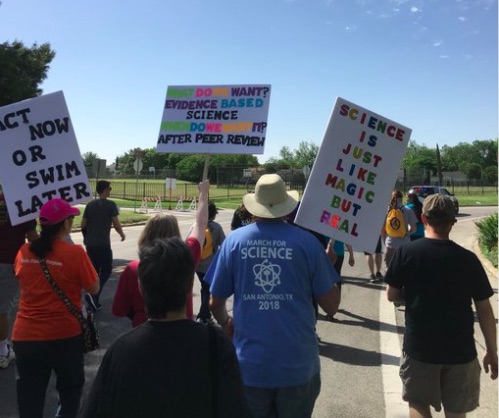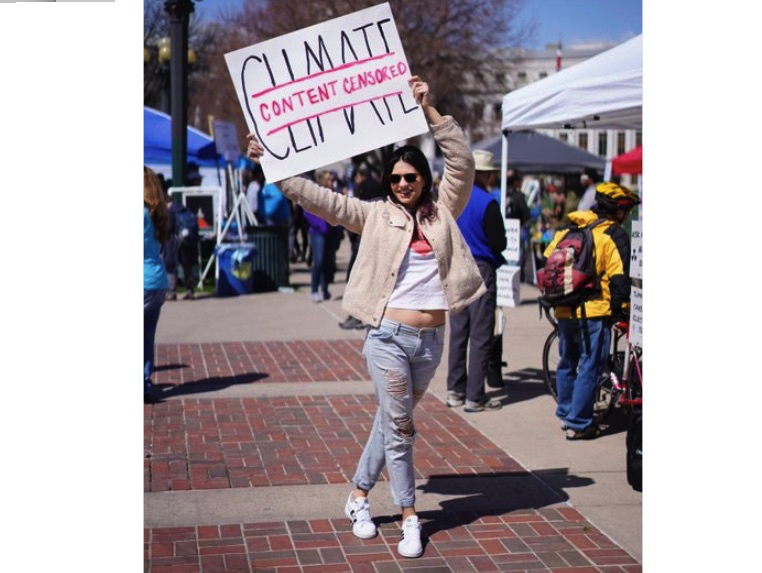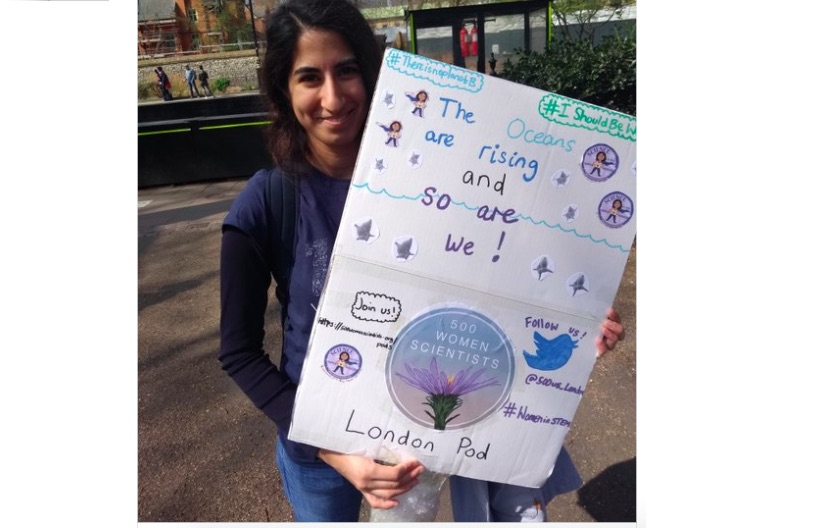. . SUSTAINABLE DEVELOPMENT . .
An article from Earth Day
Earth Day Network, the organization that coordinates Earth Day events worldwide, today [April 20] released a highlights list of Earth Day events that are taking place from Karnataka in India to Seattle in the United States of America.

“Every organization from the Smithsonian to the government of Quebec and local organizations in Rome are holding meaningful events that encompass the Earth Day spirit – global reach, local action,” said Kathleen Roger, President of Earth Day Network.
Here are just a sample of events for Earth Day 2018 that show the breath and the depth of involvement on Earth Day of government, organizations, businesses and individuals:
Earth Day The Gambia 2018, coordinated mainly by volunteers, will bring in the town of Bansang, 100 public officials, experts, teachers, extension workers, community leaders, students and citizens together to learn and develop action plans to improve waste management practices. A rally at the Bakoteh Dumpsite and a beach cleanup at Serekunda Beach are part of the program.
On Earth Day, Sunday April 22, 2018 the Earth Day Global Broadcast will air globally on PeaceChannel.com, in collaboration with Earth Day Network. Actor and environmentalist Ed Begley, Jr. and Rachel Carson-Begley will host.
From the 21st through the 25th of April in the Villa Borghese (Rome, Italy) an event will take place organized by Earth Day Italia and the Focolare Movement. The event will include five days of music, sport, culture and activities dedicated to the protection of the planet. The 2018 event will focus in particular on the 2030 Agenda and the United Nations Sustainable Development Goals through 5 talk shows dedicated to the 5Ps of sustainability: People, Planet, Prosperity, Partnership, Peace.
Sappraiwan Elephant Sanctuary in Thailand has committed to planting 300 trees on this Earth Day. They are partnering with the Phitsanulok Province Government to give 300 trees to the community on Earth Day and help them plant the trees. Residents may choose to plant the tree at their home or at the Sanctuary.
Tokyo, Japan joins the world in celebrating Earth Day with an array of events coordinated under the Green Room Festival that attracts thousands of people. NGO’s and other charities are spreading the word. The events include beach clean ups, music presentation, arts exhibits and yoga classes.
Earth Day Network has relaunched its Billion Acts of Green campaign in China for Earth Day 2018 with the theme of ‘End Plastic Pollution’. Events will the held with the participation of schools, college student associations, museums and local nonprofits to educate and activate people to prevent plastic pollution from affecting human’s health and littering our environment. As of now there are 37 events registered in 22 cities in China and they are expecting at least 20,000 participates.
The US Army Corps of Engineers has 37,000 personnel involved in Earth Day. The USACE is comprised of nine divisions and 45 districts covering the entire United States and more than 91 foreign countries.
(continued in right column)
(continued from left column)
A “No-Plastic” pop-up event will take place in Karnataka State in India. The event will bring together organizations that are champions of environmental sustainability in fields including electric vehicles, solar power, and zero-waste living. The event will include workshops led by these leaders who will talk about their journey in low pollution living and equip the audience with methods through which they can start their own journeys.
Now live for Earth Day, the #StirCrazy campaign aims to eradicate plastic stirrers from the world by 2020. It combines chains (coffee and food stores and suppliers) and the public and government including Romania and UK.
The Native American Student Association at Mississippi Southern State University will be holding an Earth Day Fair on April 20, with tabling and live music in front of the Billingsly Student Union in Hattiesburg, MS, USA.
The Great American Clean Up will take place in Palm Beach, FL, USA to encourage citizens to get involved with efforts to remove waste from the environment and drastically improve their communities.
The Bi-State Watershed Cleanup is an annual event taking place along the Hackensack River Watershed to clean waste and debris from the waterbodies in both New York and New Jersey, USA. The Park Ridge Green Team received the 2013 State of NJ Clean Water Award and the 2015 Collaboration Award from Sustainable Jersey.
A zero-waste recycling expo will take place on Earth Day in Colchester, UK. Its goals are to inspire and promote the repair, reuse, and recycling of all materials to a wider audience.
In an event titled Earth Day – A Day on Environmental Protection for the Benefit of All, in London, UK on the 22nd of April, there will be an event including world renowned speaking topics related to the preservation of our planet, global/local issues like sustainability, and plastics pollution. There will also be a panel discussion, short films, and stalls promoting local green businesses, and fun activities for all ages.
Earth Day by the Bay will take place in San Francisco, California, USA and around the greater Bay Area. The planned event is a family friendly, sustainable and educational expo celebrating Earth Day!
Earth Day at the Finnish Embassy co-sponsored by Earth Network, “A Dialogue on Ending Plastic Pollution – Opportunities for the Public and Private Sectors,” will take place on Monday, April 23 in Washington, DC, USA.
The National Museum of Natural History in Santiago, Chile has invited citizens to participate on Friday 20 and Saturday 21 April to celebrate Earth Day with talks on biodiversity conservation, extension and trees.
Earth Day, New York University, and the government of Quebec event April 20 in New York, USA co-sponsored by Earth Day Network will explore ways to stem plastic pollution, especially from plastic bags.
Bullitt Foundation Earth Day 2018 – Denis Hayes, the original coordinator of Earth Day 1970 and Chair Emeritus of Earth Day Network as well as President and CEO of the Bullitt Foundation in Seattle, USA, held an Earth Day event on April 17.
The Sierra Club has released its list of things people can do on Earth Day.
ABOUT EARTH DAY NETWORK
The first Earth Day on April 22, 1970, activated 20 million Americans from all walks of life and is widely credited with launching the modern environmental movement. Growing out of the first Earth Day, Earth Day Network (EDN), the world’s largest recruiter to the environmental movement, works with tens of thousands of partners in 192 countries to build environmental democracy and to broaden, diversify and mobilize the environmental movement. For more information, visit www.earthday.org


